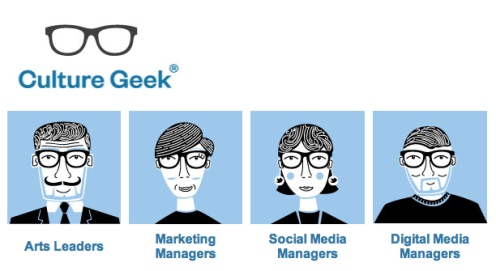Europeana at Culture Geek Conference
Today's blog comes from Geer Oskam, Senior Marketing Specialist at Europeana, and tells how he found out how cultural organisations can use their own audience to fuel growth.
Recently, I visited Culture Geek, a one-day conference about cultural marketing in the rapidly changing digital landscape.

During the day, multiple speakers gave their thoughts about how to respond to the changes of the digital revolution; and in short how to include our audiences, let them be part of the experience, be a partner in the conversation. The most interesting discussions were around the trends in using your audience for your own organisation's growth.
There was much praise for our friends of the Rijksmuseum Amsterdam. Their presentation about their new web approach, which shows off all their public domain images (125,000 documents) got much enthusiasm from the audience. Visit the Rijksstudio here, all the images can be used in any way you like: https://www.rijksmuseum.nl/nl/rijksstudio
.jpg)
Another enlightening presentation came from the Smithsonian Museum. They used extensive audience research to get an idea of what their audience thinks about them. This way they became aware of their 'brand' as experienced by their users. They asked their audience to formulate their brand in the form of a 'persona'. The result was a persona that was not entirely how they would like to see themselves - namely a pipe-smoking, older white male, condescending and authoritative.
So the question became - how could they change this brand into the person that they wanted to be? After describing this person: age, tone of voice etc., the Smithsonian put a lot of time into implementing their new brand internally: identifying internal evangelists, spreading ownership about the brand across the organisation. This took them one year, making guidelines, creating hands-on workshops, creating tools and reference materials. One of the things I found particularly smart is that they gave workshops to employers on how words and images shape organisations (this is something that not many of your coworkers think about on a day-to-day basis).
After this year of internal implementation, they went public with their new brand. They used advertising but their campaign relied heavily on social media. The two target groups were 'millenials' (young adults, everyone accustomed to using the web) and stay-at-home moms - apparently they are very internet-savvy and aware of what is happening online. The overall idea of the campaign was 'asking questions, finding answers', for which the answers were to be found in the Smithsonian and they came up with multiple 'ask the curator' concepts. What the Smithsonian found particularly helpful was asking: 'how can we be useful to our followers' lives? They came up with a smart way of thinking, setting up a 'newsroom approach', taking news of the day and creating a link to their own collections. This way they gave their users more in-depth news, creating a natural link to their own collection.
Fellow Dutchman Joost Heijthuijsen got much love from the audience for his 'open approach'. As director of the Incubate Festival in Tilburg, The Netherlands, Joost used visitors as programmers for the festival, letting them decide what to book for the festival. Joost said that: 'being open and showing how fragile we are actually helped us'. Visitors felt more connected to them and tried to help them where they could. In return, the Incubate Festival handed out loyalty cards to followers for social media activities, rewarding them for their contributions. Their philosophy is: if you get everyone invested in your brand, you don't need a marketing team.
